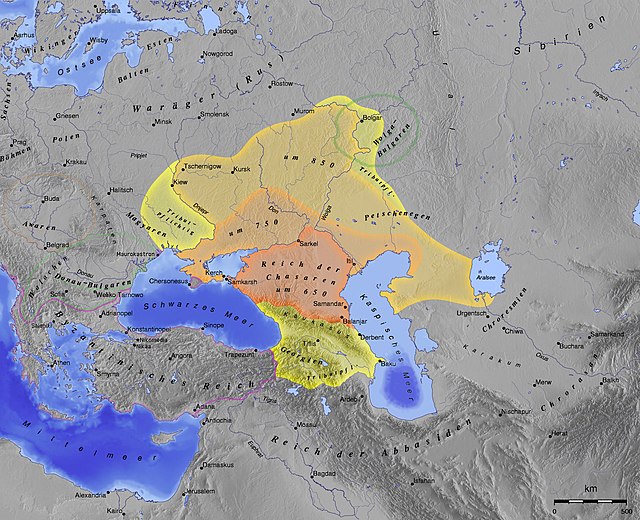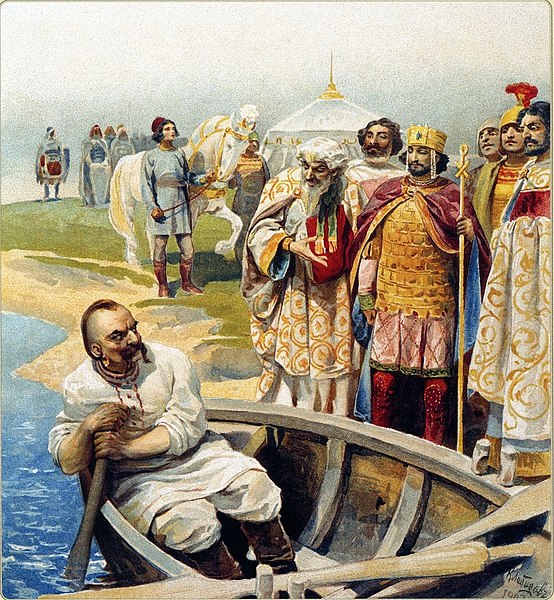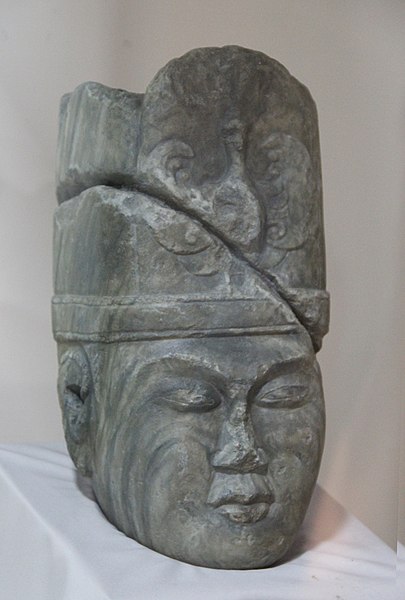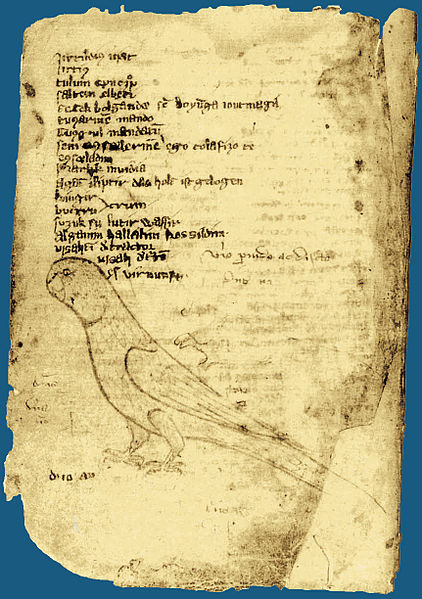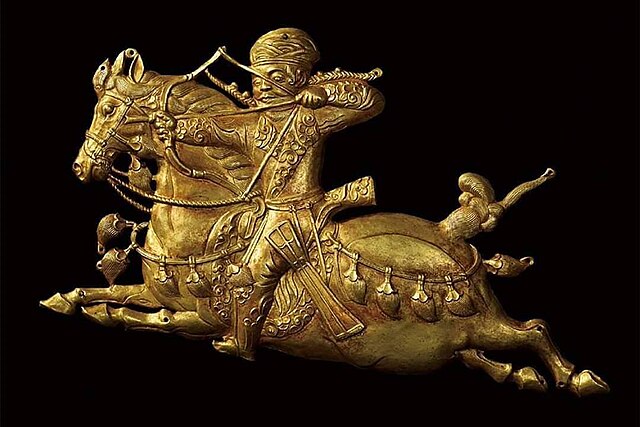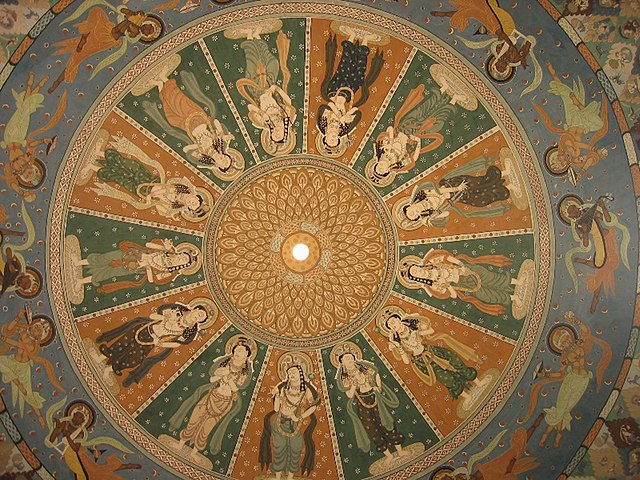The Khazars were a nomadic Turkic people that, in the late 6th-century CE, established a major commercial empire covering the southeastern section of modern European Russia, southern Ukraine, Crimea, and Kazakhstan. They created what for its duration was the most powerful polity to emerge from the break-up of the Western Turkic Khaganate. Astride a major artery of commerce between Eastern Europe and Southwestern Asia, Khazaria became one of the foremost trading empires of the early medieval world, commanding the western marches of the Silk Road and playing a key commercial role as a crossroad between China, the Middle East and Kievan Rus'. For some three centuries the Khazars dominated the vast area extending from the Volga-Don steppes to the eastern Crimea and the northern Caucasus.
Khazar Khaganate, 650–850
Site of the Khazar fortress at Sarkel (aerial photo from excavations conducted by Mikhail Artamonov in the 1950s).
Sviatoslav I of Kiev (in boat), destroyer of the Khazar Khaganate.
Seal discovered in excavations at Khazar sites. However, rather than having been made by Jews, these appear to be shamanistic sun discs.
The Turkic peoples are a collection of diverse ethnic groups of West, Central, East, and North Asia as well as parts of Europe, who speak Turkic languages.
Bust of Kul Tigin (AD 684–731), prince of the Second Turkic Khaganate, found in Khashaat, Arkhangai Province, Orkhon River valley. National Museum of Mongolia.
A page from "Codex Kumanicus". The Codex was designed in order to help Catholic missionaries communicate with the Kumans.
A Turkic warrior from the Göktürk period. The horse's tail is knotted in Turkic style. His hair is long, braided and his big-collared caftan and boots are Turkic clothing features.
Uyghur painting from the Bezeklik murals

